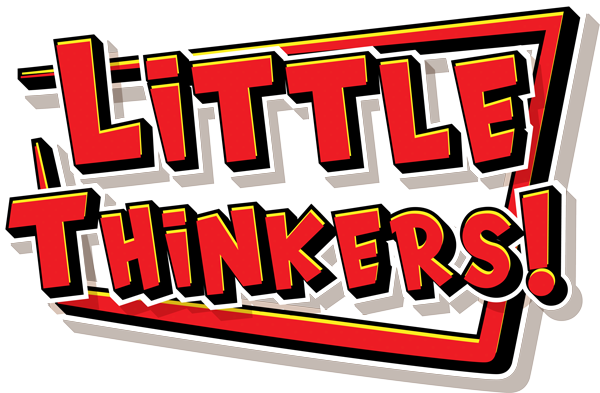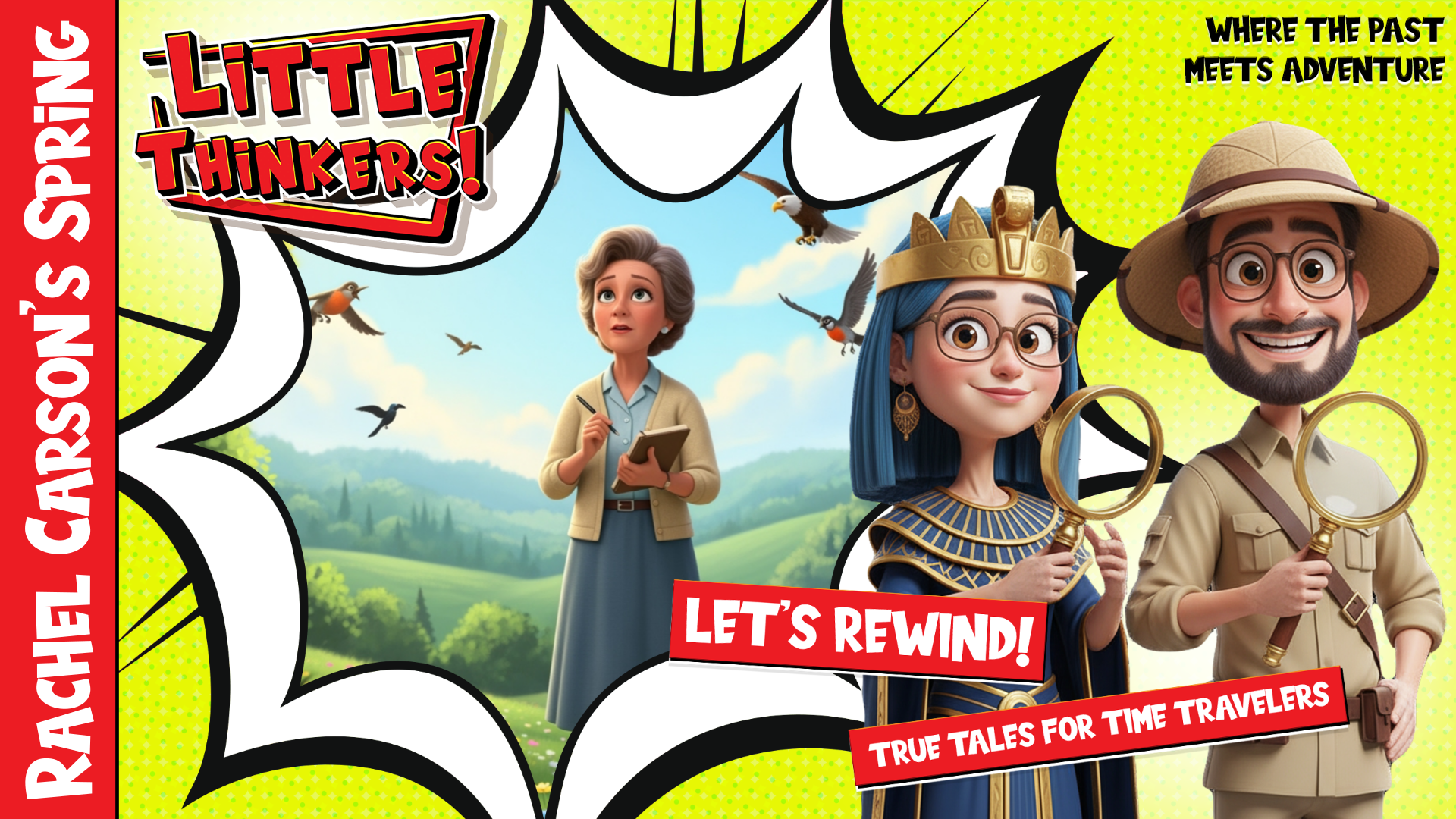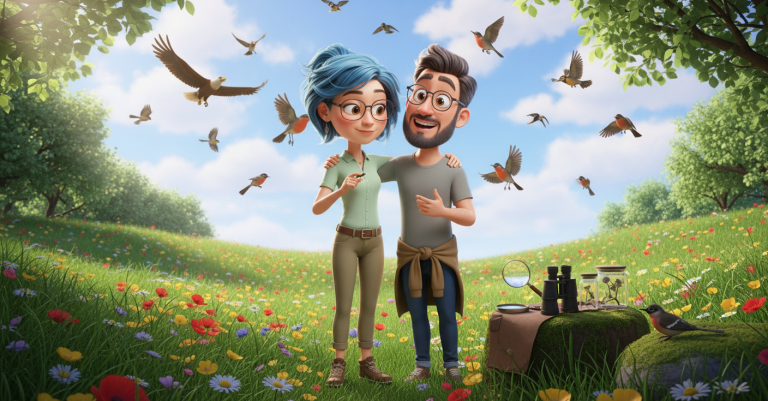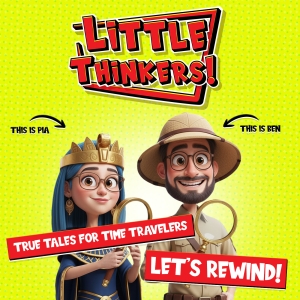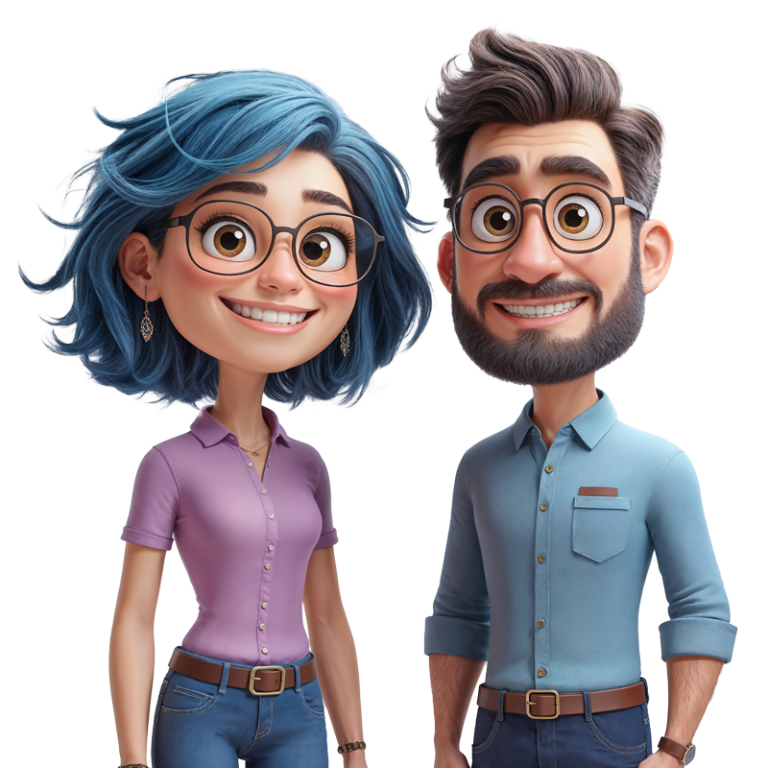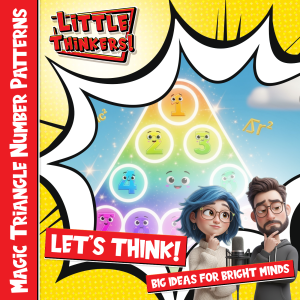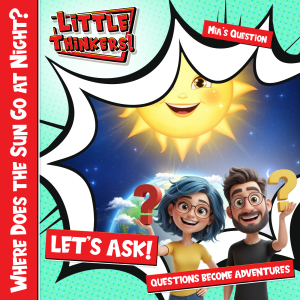The Woman Who Saved Spring: Rachel Carson’s Amazing Adventure
Imagine a World Without Birdsong
Picture this: You wake up on a beautiful spring morning, but something feels terribly wrong. The air is silent. No cheerful chirping fills your ears. No robins hop across the grass. The trees stand empty and quiet, like the world has lost its music. This nightmare almost became real in the 1960s, until one brave woman decided to speak up. Her name was Rachel Carson, and she became one of the most important heroes in the fight to protect our planet!
Rachel wasn’t a superhero with special powers. She was a quiet scientist who loved to write. But when she discovered that chemicals were making birds disappear, she did something incredible. She wrote a book that changed the world. Let’s dive into her amazing story!
A Girl Who Listened to Nature
Long before Rachel became famous, she was just a curious little girl growing up on a farm in Springdale, Pennsylvania, in the early 1900s. While other kids played with toys, Rachel spent hours outside with her mother, Maria. They would walk through the fields and forests, looking for animal tracks in the mud and listening to different bird calls.
Rachel had a special talent: she could sit perfectly still and just listen. She heard sounds that other people missed. The rustle of a mouse in the grass. The splash of a fish jumping in the creek. The whisper of wind through the leaves. Her mother taught her the names of flowers and trees, and Rachel wrote them all down in a little notebook.
Fun Fact!
Rachel loved to write stories about animals when she was just eight years old! She even won a prize for a story she wrote about her dog. Writing and nature were always connected in her heart.
As Rachel grew up, she never lost her love for the outdoors. She decided to study science in college, which was pretty unusual for women back then. Most girls were expected to become teachers or nurses, but Rachel wanted to understand how the natural world really worked.
The Sea Calls Her Name
After college, Rachel got a job with the United States government, writing about fish and ocean life. This might sound boring, but Rachel made it exciting! She wrote radio scripts that helped people understand the amazing creatures living under the waves. Imagine learning about schools of shimmering fish or giant octopuses through your family radio!
Rachel spent her evenings and weekends writing books about the ocean. Her first book was called Under the Sea Wind. It told the story of sea creatures like they were characters in an adventure novel. Then she wrote The Sea Around Us, which became so popular that Rachel could finally quit her day job and write full-time.
Did You Know?
- Rachel never learned to swim well, but she absolutely loved the ocean!
- She bought a small cottage by the sea in Maine where she could watch the tides every day
- She often took her young nephew on nighttime beach walks with flashlights to discover sea creatures
Rachel’s ocean books made people fall in love with the sea. She wrote about waves that traveled thousands of miles and tiny creatures that glowed like underwater stars. She had a gift for making science feel like magic!
A Scary Discovery
In the 1950s, something new appeared in towns across America. Big trucks drove down streets, spraying a fine mist from hoses. The spray contained a chemical called DDT, and people thought it was wonderful because it killed mosquitoes and other bugs that bothered them.
But then strange things started happening. Birds began falling from trees. They would stumble around on the ground, unable to fly properly. Fish started floating dead in ponds and streams. Something was terribly wrong.
One day, Rachel received a letter from her friend Olga Huckins in Massachusetts. Olga was heartbroken because many birds had died in her yard right after planes sprayed DDT over her neighborhood. She begged Rachel to help find out what was happening.
What Was DDT?
DDT stands for dichlorodiphenyltrichloroethane (that’s a really long name!). During World War II, soldiers used it to kill disease-carrying insects, and it saved many lives. But after the war, people started spraying it everywhere without understanding how dangerous it could be to wildlife.
Rachel began investigating like a detective. She called scientists all over the country. She read hundreds of research papers. She visited farms and forests to see the damage for herself. What she discovered was shocking!
The Terrible Truth About Chemicals
Rachel learned that DDT didn’t just kill bugs and then disappear. Instead, it stayed in the environment for years! When it rained, the chemicals washed into streams and rivers. Fish absorbed the poison into their bodies. When birds ate the fish, they got poisoned too.
The worst part was what happened to bird eggs. DDT made eggshells so thin that they broke before baby birds could hatch. Magnificent eagles, hawks, and osprey were having fewer and fewer babies. Some types of birds were disappearing completely!
Rachel realized she was uncovering one of the biggest environmental disasters in American history. But she was just one person. How could she possibly fight against powerful chemical companies and convince people to listen?
The Food Chain Mystery
Rachel discovered something scientists now call bioaccumulation. Here’s how it worked: Tiny amounts of DDT on leaves didn’t seem dangerous. But when caterpillars ate lots of leaves, the poison built up in their bodies. When birds ate lots of caterpillars, even more poison built up. It was like a pyramid of poison getting worse and worse!
Writing the Most Important Book of Her Life
Rachel knew she had to warn the world, but she was facing a huge challenge. She was getting sick with cancer, and some days she felt too weak to work. Chemical companies had lots of money and power. Many people thought pesticides were completely safe. How could she make them understand the truth?
Rachel decided to do what she did best: write. But this wouldn’t be just any book. It would need to be perfect. Every single fact had to be correct because she knew her enemies would try to find any mistake to discredit her.
For four years, Rachel worked like a scientist and a detective rolled into one. She contacted researchers in universities, government labs, and hospitals. She read every study she could find about pesticides. She kept careful notes on thousands of index cards, organizing them by topic and date.
A Race Against Time
Rachel was running out of time. Her cancer was getting worse, and she often had to rest between writing sessions. But she kept working because she knew how important her message was. Sometimes she wrote late into the night, fueled by hot tea and determination.
She chose a title that would grab people’s attention: Silent Spring. The name painted a scary picture of what could happen if all the birds disappeared. Imagine a spring season with no cheerful songs, no colorful wings, no life in the trees!
The Book That Shook the World
When Silent Spring was published in 1962, it was like a bomb going off. The book was beautifully written, easy to understand, but also scientifically accurate. Rachel didn’t just complain about pesticides – she explained exactly how they worked and why they were dangerous.
The book became a bestseller immediately. Families read it together at dinner tables. Teachers used it in science classes. Even President John F. Kennedy heard about it and ordered government scientists to investigate Rachel’s claims.
But not everyone was happy. Chemical companies were furious! They spent millions of dollars trying to prove Rachel wrong. They called her names and said she wasn’t a “real” scientist because she didn’t work in a laboratory. They even said she wanted to ban all pesticides and let insects take over the world!
Rachel Fights Back
Rachel stayed calm during all the attacks. She had done her homework so well that she could answer every criticism with facts and evidence. When people challenged her on television or in newspapers, she simply pointed to her research and let the truth speak for itself.
The Government Listens
Something amazing happened. President Kennedy’s scientists studied Rachel’s evidence and found that she was right about almost everything! Their report agreed that DDT and other pesticides were indeed harming wildlife and might be dangerous to people too.
Rachel was invited to speak to Congress. Imagine how nervous she must have been, standing in front of all those powerful politicians! But she spoke clearly and calmly, explaining the science in ways that everyone could understand. She didn’t ask them to ban all chemicals – she just wanted them to be more careful and do more research before spraying poisons everywhere.
A Sad Goodbye
Sadly, Rachel died of cancer in 1964, just two years after Silent Spring was published. She was only 56 years old. But her work was just getting started. Her book had planted seeds of change that would grow for decades.
How Rachel Changed the World
After Rachel died, amazing things began to happen. In 1970, the United States created the Environmental Protection Agency (EPA) to protect air, water, and wildlife. The first Earth Day was celebrated that same year, and millions of people joined the environmental movement that Rachel had started.
In 1972, the United States banned DDT for most uses. Other countries followed. Slowly, bird populations began to recover. Eagles, hawks, and ospreys started having healthy babies again. The spring chorus grew louder!
Heroes Inspired by Rachel
- Greta Thunberg, the young climate activist, says Rachel Carson inspired her
- Many scientists chose their careers after reading Silent Spring
- Environmental groups around the world use Rachel’s methods of careful research and clear communication
Today, we have much stronger laws protecting the environment. Before companies can sell new chemicals, they have to prove they’re safe for wildlife and people. It’s not perfect, but it’s so much better than it was in Rachel’s time!
Rachel’s Other Amazing Gift
Rachel didn’t just save birds – she also taught us how to help children love nature. She wrote a beautiful little book called The Sense of Wonder about taking kids outside to explore. She believed that if children fell in love with the natural world, they would grow up to protect it.
Rachel thought the best classroom was outside. Tide pools, forests, gardens, even city parks could be places of discovery. She encouraged families to take slow walks, ask questions, and really look at the world around them.
Wonder Walks
Rachel loved to take her young nephew on “wonder walks” at night along the beach. They would use flashlights to find crabs scuttling over rocks and listen to the waves whisper secrets. She wanted him to feel the same magical connection to nature that had shaped her entire life.
Life Back Then – A Different World
When Rachel was young, the world was very different from today. There were no computers, no internet, no cell phones. If she wanted to research something, she had to write letters by hand and wait weeks for replies. She had to visit libraries and flip through card catalogs to find books.
Women weren’t encouraged to become scientists. Many universities didn’t even accept female students in science programs. Rachel had to work twice as hard as men to prove herself. She often had to take other jobs to pay her bills while writing her books at night and on weekends.
Amazing Facts About Rachel’s Time
- There were no environmental laws – companies could dump whatever they wanted into rivers and air
- Most people had never heard of ecology or environmental science
- DDT was so popular that some people even used it as a household spray!
- Television was still new – many families got their news from radio and newspapers
Nature Detectives Today
Thanks to Rachel, we now have thousands of scientists studying how chemicals affect the environment. They test water, air, and soil. They watch animal populations and study how different species interact. They use computers and satellites to track pollution around the world.
But you don’t need fancy equipment to be a nature detective like Rachel! You can observe the world around you, ask questions, and keep notes just like she did. Maybe you’ve noticed fewer butterflies in your garden, or more litter in a local stream. Your observations could help scientists understand what’s happening in your area.
Become a Young Environmentalist
- Start a nature journal and draw or write about what you see outside
- Plant native flowers to help feed bees and butterflies
- Join or start a recycling program at school
- Write letters to local officials about environmental problems you notice
- Organize neighborhood clean-up days
The Fight Continues
Rachel’s work isn’t finished yet. We still face environmental challenges like climate change, plastic pollution in the oceans, and habitat loss that threatens many species. But we have tools that Rachel could only dream of!
Scientists can now track migrating animals with tiny GPS devices. They can analyze DNA to understand how species are related. Computers can model how pollutants spread through ecosystems. And thanks to the internet, environmental information can reach millions of people instantly.
Most importantly, we have laws and agencies that didn’t exist in Rachel’s time. When scientists discover environmental problems today, there are systems in place to address them. It’s not always fast or perfect, but the foundation that Rachel helped build is still protecting us.
Modern Environmental Heroes
Rachel inspired a whole generation of environmental heroes. People like Jane Goodall, who studied chimpanzees; Wangari Maathai, who planted millions of trees in Africa; and Sylvia Earle, who explores and protects our oceans. They all followed Rachel’s example of combining careful science with powerful communication.
What Rachel Teaches Us Today
Rachel Carson’s story teaches us that one person really can change the world. She wasn’t rich or powerful when she started. She was just a woman who loved nature and wasn’t afraid to ask tough questions. When she saw something wrong, she decided to do something about it.
She also showed us that the best way to convince people is with facts, not anger. Even when chemical companies attacked her personally, Rachel stayed focused on the science. She let her research speak for itself.
Most importantly, Rachel taught us that everything in nature is connected. When we hurt one part of the environment, it affects everything else. The same is true for taking care of nature – when we protect one species or clean up one river, it helps the whole ecosystem.
Rachel’s Rules for Changing the World
- Pay attention to what’s happening around you
- Ask questions when something doesn’t seem right
- Do your research and get the facts
- Share what you learn in ways people can understand
- Stay calm and stick to the truth when people disagree with you
- Never give up, even when the work is hard
Spring Songs Return
Today, if you wake up on a spring morning, you’ll likely hear something wonderful: birds singing! Eagles soar over rivers again. Ospreys build their huge nests on platforms that people built especially for them. Peregrine falcons nest on city skyscrapers. The spring chorus that almost fell silent is playing again.
This doesn’t mean all our environmental problems are solved. We still need to be careful about chemicals and protect wild spaces. But Rachel Carson’s courage and determination gave us a second chance. She proved that when people work together, they can heal the damage and bring life back to the world.
Every time you hear a bird sing, remember Rachel Carson. She listened to nature when it was in trouble, and then she made sure the whole world could hear its cry for help. Thanks to her, spring will never be silent again.
The Wonder Never Ends
Rachel once wrote, “If I had influence with the good fairy who is supposed to preside over the christening of all children, I should ask that her gift to each child in the world be a sense of wonder so indestructible that it would last throughout life, as an unfailing antidote against the boredom and disenchantment of later years.”
That sense of wonder – the same curiosity that made a little girl sit quietly in a Pennsylvania field and listen to the birds – is still alive today in every child who asks questions about the natural world. Rachel’s greatest gift wasn’t just saving the environment. It was showing us that caring about nature and asking questions can change everything!
